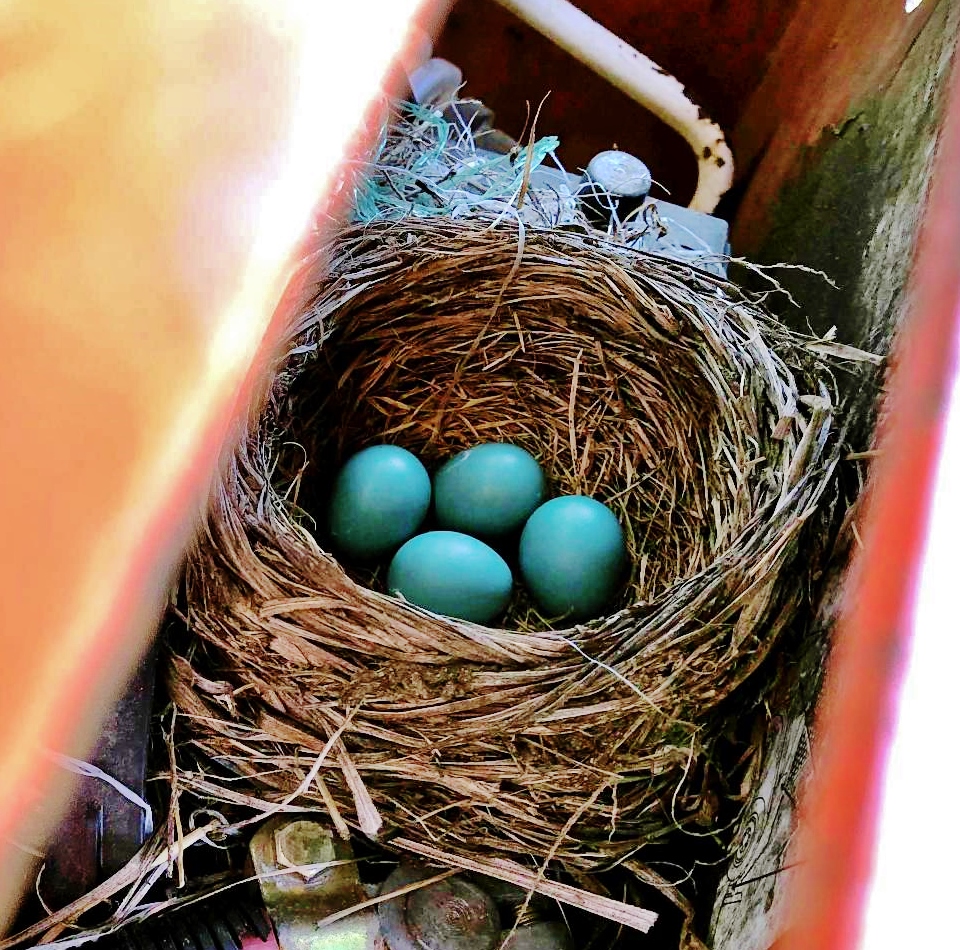Back Home by Chris Hardie
» Download this column as a Word document
» Download the photos that accompany this story
» Chris Hardie’s headshot
It was just daybreak but hardly a silent morning as a cacophony of bird calls greeted me.
The nocturnal whippoorwill was calling from a tree as it prepared to go to bed for the day. Turkeys gobbled before descending from their night roosts; a barred owl hooted. Robins were already singing.

We’ve always had lots of feathered friends on the farm and that’s not counting the chickens. Birds are abundant in our yard and in the nearby woods — sparrows, blackbirds, killdeer, jays, cardinals, finches, chickadees, woodpeckers, starlings, orioles, wrens, hummingbirds, swifts and others are seen or heard every day. And that’s not to mention their larger cousins the pigeons, doves grouse, crows, owls, hawks, buzzards and eagles.
I’m still waiting for the return of our barn swallows, which dip and dive for bugs. They help keep our little part of paradise virtually mosquito-free — a luxury I don’t take for granted. They make a mess in the old dairy barn, but it’s a small price to pay for their predatory mosquito prowess.
Everyone enjoys the return of the robin, one of the first birds to mark spring. Some robins — those southern retreats are pricey these days — actually stay year-round, especially if there’s plenty of food.
Male robins are the first to arrive and mark their territory by singing what allaboutbirds.org calls the “True Song.” But when the females arrive, the real work of building a nest and raising fledglings begins.
The female builds the nest, lays the eggs and incubates them. Once the nestlings hatch, both parents feed them. They’ll continue to follow the young around and feed them after they leave the nest. The female then builds a new nest and lays new eggs. While she incubates the new brood, the male continues to feed the fledglings. But when the new eggs hatch, the fledglings are on their own; the male helps with the new arrivals.
It’s a pattern that repeats itself three times every year, although only 40 percent of nests successfully produce young and only 25 percent of young birds survive to November.
RELATED: Read more of Chris Hardie’s columns about rural life in Wisconsin
We’ve had robins build nests in many places through the years — including on the rear bumper of my pickup truck when it was parked for a while with the tailgate down. Hanging baskets are a favorite spot, as is the top of a post that supports a cast-iron dinner bell. The bell is a tribute to my late great-aunt Sara Clair who would ring it to summon farm workers when dinner — lunch — or coffee was served.
This year, I discovered a new nest location. I was walking past my old skid steer when I heard the scolding chirp of a robin, meaning there was a nest nearby. I quickly discovered it on top of the battery inside the back door, with four eggs.
The females spend about 50 minutes of every hour incubating the eggs, which will hatch about two weeks from the time the last egg is laid. The males hang out in roosting locations – probably talking about weather or baseball — until they’re called into service. If the female is killed, the eggs are doomed because males do not incubate.
The bright-blue color of robin eggs doesn’t come from diet but is actually a pigment from the mother’s blood, ornithologist Laura Erickson explains on the website Journey North. The early bird does get the worm; robins eat more earthworms in the morning and more fruit later in the day. That’s because they find worms by sight and worms go underground as the morning progresses.
Because I have no pressing need to use the skid steer for a while, I’ll be able to leave the nest undisturbed. In a few days, it will be busy with upturned mouths looking for food.
Erickson says for the first four days the nestlings are fed regurgitated partly digested food. By day five they start to receive chunks of earthworm; they quickly graduate to whole worms and large insects. It takes a lot of worms – each young robin may eat as much as 14 feet of earthworms during its two-week nest life.
The fledglings will still be dependent on their parents once they leave the nest until they grow feathers and are strong enough to fly, which takes about two weeks. That’s the time they’re susceptible to predators — especially cats. But for now, they should be safe inside the cowling of another cat — a Bobcat.
Chris Hardie spent more than 30 years as a reporter, editor



